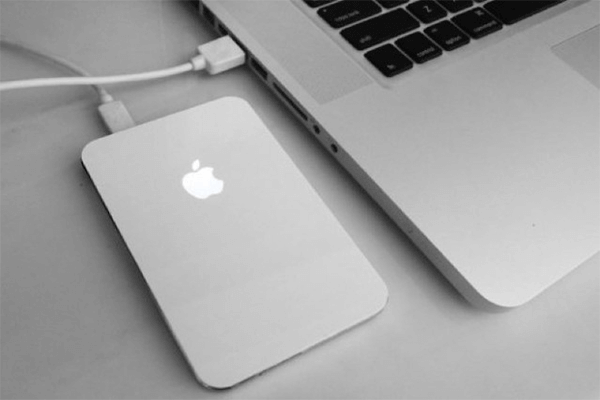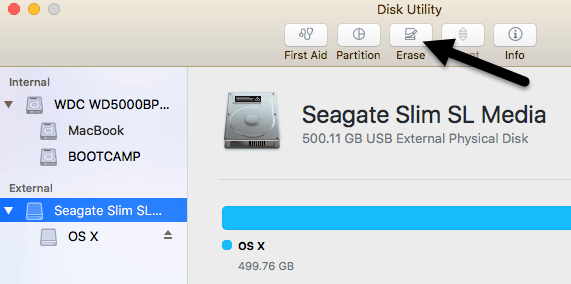

- Use external hard drive for mac how to#
- Use external hard drive for mac mac os#
- Use external hard drive for mac mac#
- Use external hard drive for mac windows#
Time Machine will automatically suggest that you encrypt your backup when you connect the external drive. An AirPort Time Capsule, Apple’s wireless router with network-attached storage, which you set up on your network.Connecting the external hard drive to the USB port on an AirPort Extreme Base Station on your network.An external hard drive that connects using the USB, FireWire, or Thunderbolt port on your Mac.To set up Time Machine, you need to start by buying an external storage solution such as:
Use external hard drive for mac how to#
Learning how to use Time Machine's features can help you create a backup for data recovery.
Use external hard drive for mac mac#
Your Mac comes with Time Machine, Apple's built-in backup feature.
Use external hard drive for mac windows#
ExFAT allows you to use Windows volumes over 32 GB.MS-DOS (FAT) allows you to use Windows volumes of 32 GB or less.

Use external hard drive for mac mac os#
Mac OS Extended (Case-sensitive, Journaled, Encrypted) adds password and encryption protection to the partition while also including Mac formatting with case sensitive folder names.("Backup" and "backup" will be two different files.) Mac OS Extended (Case-sensitive, Journaled) makes case-sensitive folders and Mac format.Mac OS Extended (Journaled, Encrypted) adds a password and partition encryption to the Mac format.Mac OS Extended (Journaled) uses Mac formatting to protect data integrity.A Format pop-up window will give you the opportunity to choose one of the following:.Click "Erase" from the Disk Utility options.Find your external hard drive in the list of drives.Open Applications > Utilities > Disk Utility.Since most external hard drives are formatted for PCs, before the backup of your Mac begins you need to format the hard drive for macOS. Additionally, although they are expected to have longer lifespans than HDDs, they are relatively new which means projections of their lifespan potential remains conjecture.Ĭopying the files from your Mac to an external drive allows you to save data on your own terms. While this technology makes them less likely to suffer physical damage, it also makes storing large amounts of data expensive. SSDs use flash memory which writes data to memory chips rather than spinning disks. If you're looking to store 2 TB of data or less, an SSD offers tremendous value, boasting high speed, small size, and long lifespan. Pros: Speed, size, malfunction rates, lifespan Second, if you choose to fragment the information to protect your data recovery, the backup takes time. First, the spinning disks are more likely to break down if dropped or handled roughly. HDDs use spinning disks to write data, however, which creates two different problems. If you're looking to store a lot of data, then a traditional HDD might be the best option because larger capacities drives are more reasonably priced. Hard Disk DrivesĬons: Physical damage, physical size, speed Choosing between an SSD or HDD means taking a look at the pros and cons of each.

The first step in creating a backup for your Mac is choosing an external drive that enables the best data recovery option. Each bay may have its own external interface, or the drives may be routed through a RAID controller and presented to the Mac using a single interface.Choosing an External Drive: Solid-State Drive (SSD) or Hard Disk Drive (HDD) The external interfaces available include USB 2, USB 3, FireWire, eSATA (and other SATA types), and Thunderbolt. They usually hold 3.5-inch drives, but many also support SSDs. Multi-bay enclosures range from holding two drives to holding 16 or more drives.


 0 kommentar(er)
0 kommentar(er)
